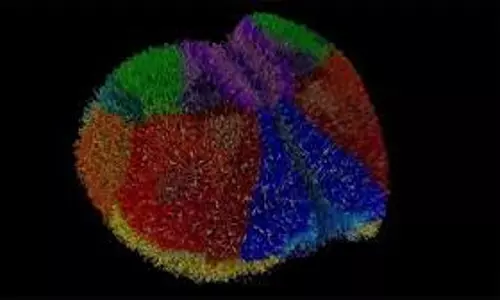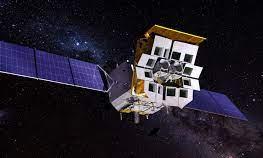
China launches lotus-shaped satellite to explore "celestial fireworks"
text_fieldsBeijing: China successfully launched a new astronomical satellite resembling a lotus flower into space, aiming to observe a phenomena in space that flicker like fireworks.
Dubbed the Einstein Probe (EP), the satellite utilises pioneering X-ray detection technology modelled after a lobster's eye.
The launch, facilitated by a Long March-2C carrier rocket from the Xichang Satellite Launch Centre in Sichuan Province, propelled the satellite, weighing approximately 1.45 tonnes and sizable as a full-size SUV.
The craft's distinctive lotus-inspired design incorporates 12 petal-shaped modules housing wide-field X-ray telescopes (WXT), along with two stamen-shaped modules housing follow-up X-ray telescopes (FXT), reported the state-run Xinhua news agency.
Yuan Weimin, principal investigator of the EP mission and a researcher at the National Astronomical Observatories of the Chinese Academy of Sciences (CAS), highlighted the satellite's primary objectives.
These encompass capturing initial light emissions from supernova explosions, identifying X-ray signals accompanying gravitational wave occurrences, and detecting dormant black holes and other faint transient celestial objects.
Reflecting on the significance of the mission, Yuan underscored the crucial role in exploring fundamental inquiries about the universe's composition, the governing laws in extreme celestial environments, and the life cycle of stars.
Yuan emphasised the dynamic nature of the universe, citing events like star explosions, black hole activity, and neutron star collisions, which propel extreme celestial activities invisible to the human eye but vital for comprehensive cosmic comprehension.
The satellite's technology, employing WXT and FXT telescopes, acts as expansive tools to monitor vast cosmic areas and promptly capture unpredictable celestial occurrences. Ling Zhixing, an instrument scientist overseeing WXT, likened their function to casting a broad net to capture unforeseen phenomena within the universe's expansive scope.
FXT, developed collaboratively by an international team, showcases heightened sensitivity enabling autonomous discovery of transient sources. Additionally, the EP mission introduces innovative CMOS sensors for space-based X-ray observation, marking a significant advancement in X-ray astronomical detection.
The collaboration, engaging entities like The European Space Agency and the Max Planck Institute for Extraterrestrial Physics in Germany, aims for an extensive survey of high-energy transient sources, investigating cloaked black holes, and exploring their genesis and development. The mission's spectrum of observation extends to neutron stars, white dwarfs, supernovae, and gamma-ray bursts.
Yuan, optimistic about groundbreaking discoveries, eagerly anticipates uncovering uncharted celestial phenomena through the EP mission's astronomical exploration.






















